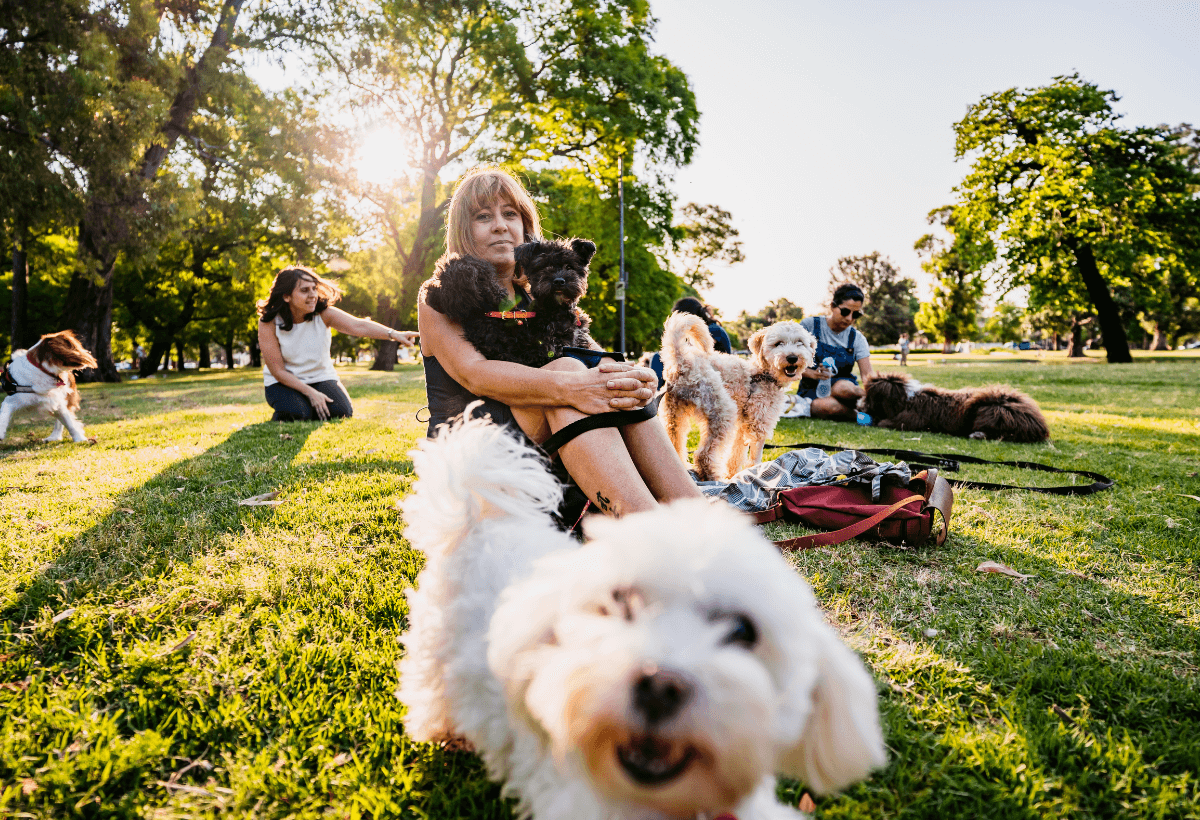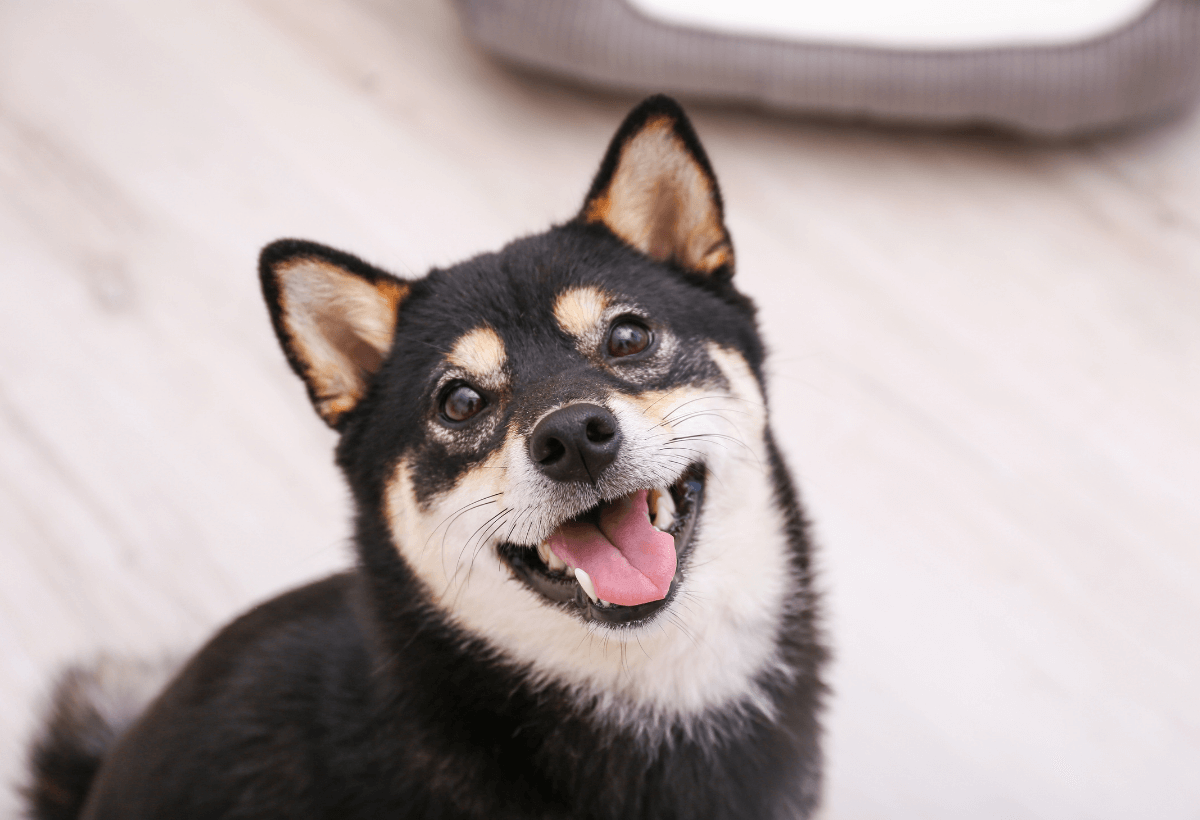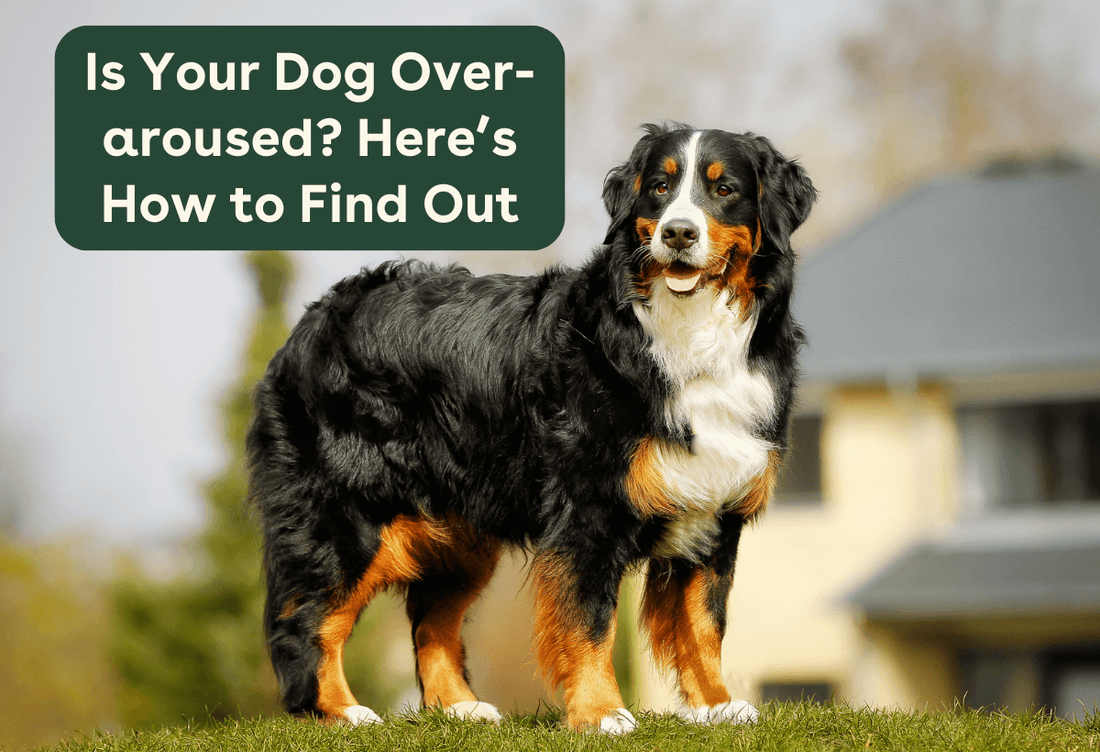One prevalent issue faced by many dog parents is overarousal behavior.
Over-arousal, sometimes called hyperarousal, can lead to other behavioral problems, compromise safety, and negatively impact your relationship with your dog.
In this blog post, we will explore what overarousal entails, how to identify it, and how to provide solutions to managing and preventing over-arousal behavior through positive reinforcement training techniques.
Here’s what we cover:
- Understanding Over-arousal
- Recognizing Over-arousal
- Triggers for Over-arousal
- How to Help
WHAT IS OVER-AROUSAL IN DOGS?

Over-arousal in dogs refers to a heightened state of excitement. While this is a normal response to stimuli, it can become excessive or chronic. Over-arousal can lead to the performance of unwanted behaviors - some that may be out of character for them - and interfere with their judgment.
It may seem as though your dog has such a high level of energy that they are unable to control themselves.
This is a response to external stimuli and stressors that change their mental and physical state and create a surplus of energy. This energy must go somewhere, which causes the unwanted behaviors.
Over-arousal can be caused by an excessive amount of sensory input such as excessive noise, crowded environments, or an overwhelming amount of new sights and sounds at once.
Some dogs may be more prone to experiencing overarousal than others due to a lack of training or opportunities for mental enrichment, frustration surrounding their needs being met, and dogs who struggle with relaxation or impulse control.
RECOGNIZING OVER-AROUSAL IN DOGS

Some physiological signs that your dog is over-aroused or in hyperarousal are a high respiration rate, dilated pupils, panting, teeth chattering, excessive salivation, and tense body language. Additionally, here are some behaviors you may observe when your dog is overaroused.
- Hyperactivity: Overaroused dogs may exhibit excessive physical activity and an abundance of energy that they don’t know what to do with. They may run around, jump, and bark excessively in response to various triggers in their environment.
- Inability to Focus: Dogs in an aroused state often struggle to pay attention to their guardians or respond to cues. They are too distracted by their heightened emotional state.
- Mouthiness: One common behavior that arises during overarousal is mouthiness. Dogs may put their mouth on you or other things in the environment as a displacement behavior.
- Whining and Panting: Excessive whining and panting can be indicators of overarousal. These behaviors are often associated with stress and excitement.
- Destructive Behavior: Overaroused dogs whose needs aren’t being met may resort to destructive behaviors such as digging or chewing.
- Restlessness: A dog that can’t seem to settle down and is constantly in an alert state is likely suffering from overarousal.
- Aggression: In severe cases, overarousal can lead to aggressive behavior, putting you, your dog, and others at risk.
TRIGGERS FOR OVER-AROUSAL IN DOGS - WHY IT HAPPENS

Understanding what triggers overarousal in your dog is crucial to creating a training plan. Common triggers include:
- Novelty: Dogs may become over-aroused when exposed to new or unfamiliar environments, people, or animals.
- Exciting Stimuli: High-energy activities such as playing fetch or other repetitive tasks can lead to overarousal. Especially when dogs are intensely focused on the game.
- Frustration: Frustration can cause overarousal, as your dog might be unable to achieve a desired outcome, like getting to a squirrel they can’t catch.
- Social Interaction: Meeting new dogs or people especially when a dog is lacking impulse control or is not properly socialized, can lead to overarousal due to excitement or fear.
- Lack of Exercise and Mental Enrichment: A dog with excess energy and no outlet for physical exercise, problem-solving, or an outlet for natural behaviors may become over-aroused.
HOW TO HELP WITH OVER-AROUSAL IN DOGS

Positive reinforcement training techniques are incredibly effective in managing and preventing overarousal. Instead of using punishment-based methods which can exacerbate anxiety and fear in an already over-aroued dog, focus on redirecting and reinforcing behaviors you want repeated.
Here’s how positive reinforcement training can help:
Redirection: Use redirection to help your dog use their energy more positively. For example, if your dog becomes over-aroused during play, redirect them to an activity like sniffing or licking that is naturally soothing. This could be as simple as tossing some treats in the grass for them to sniff out.
Learn more about redirecting a dog's problem behaviors here!
- Counterconditioning: If your dog gets over-aroused by specific triggers in their environment, use counterconditioning methods to change their emotional response and teach them an alternate behavior to perform when confronted with that trigger.
- Work on Impulse Control: Many dogs experience overarousal because they lack impulse control. With increased impulse control dogs will be better able to manage their emotions and potential frustrations. A great way to play with your dog and teach impulse control is by using a flirt pole!
Learn more and improve impulse control with the 21 Impulse Control Games course!
- Relaxation: This might come as a surprise, but relaxation is a learned skill, and not all dogs know how to settle, especially in overstimulating environments. Learn how to teach your dog the relaxation protocol here!
- Exercise and Enrichment: Ensure your dog is getting daily opportunities for mental and physical exercise. Engage in activities like scent work, puzzle games, trick training, etc. A dog with daily opportunities to problem-solve, sniff, lick, and chew will be less likely to struggle with overarousal.
DOGS OVER-AROUSAL RECAP

Being able to recognize and address overarousal is an important skill for every dog parent to have. By redirecting your dog’s energy, teaching impulse control, reinforcing relaxation, and providing outlets for mental enrichment, you can help your pup be a well-adjusted and happy companion!
We offer a 100% free online video course, 30 Day Perfect Pup, to help you train a calm, well-mannered pup. Sign up today!









